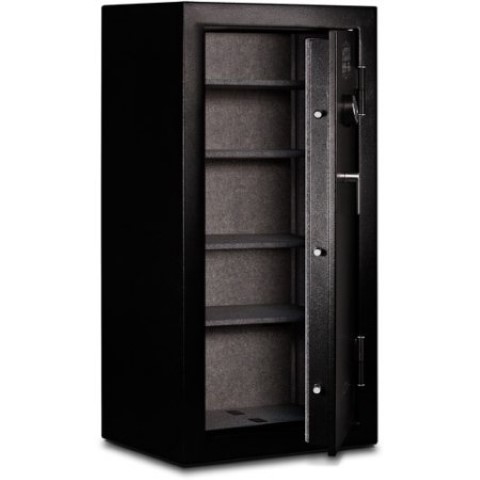- 773 741 1359
-
This email address is being protected from spambots. You need JavaScript enabled to view it.
Fire Safety Learning Center
Tips for purchasing a security safe

When you are searching for a new safe to store valuable and important items in your home, there are a number factors to consider, including the type of safe that is appropriate for the items you would like to safeguard. For example, a gun safe is appropriate for firearms but unnecessary for documents like social security cards and birth certificates.
In addition to selecting a safe based on its intended use, you may want to take into consideration the following criteria when purchasing a new safe for the storage of your valuables and essential documents.
Fire Rating
Most safes have a fire rating to indicate their ability to withstand heat sufficiently to protect the materials inside. Underwriters Laboratory™ (UL) is an independent safety organization that tests items for their level of safety under hazardous circumstances, including fires, and their fire ratings provide helpful information when selecting a safe.
UL™ fire ratings include the class of the safe, which designates the materials it is designed to protect, and the length of time such materials can expect to be protected inside the safe in the event of a fire reaching a specified temperature.
The three different rating classes are as follows:
- UL™ Class 350 - this rating is for safes that are designed to protect paper products.
- UL™ Class 150 - this rating is for safes intended to protect media items such as magnetic tapes and photographic film.
- UL™ Class 125 - this rating is for safes that are used to protect data such as computer disks.
Each of these class ratings is paired with a ½-, 1-, 2-, 3-, or 4- Hour classification. For example, a UL™ Class 150 3-Hour rating on a safe translates to a safe that will protect media objects for up to 3 hours.
Waterproof
An often overlooked characteristic of a quality safe is that it is waterproof. To determine whether a safe you are considering purchasing is waterproof, look for clear language stating it is waterproof and/or submersible. “Water resistant” typically is insufficient to provide adequate protection from water hazards, whether from flooding or fire hoses.
Even with a waterproof safe, however, it is good practice to secure sensitive items in waterproof containers within the safe as an added measure of protection from water damage.
Warranty
Quality manufacturers of safes guarantee that they will replace their product in the event it fails due to a defect or even if it is destroyed due to hazardous conditions against which it was designed to protect. Be sure you understand the terms of the warranty, however, as manufacturer warranties generally cover only the safe itself and not the contents within the safe.
Security Features
Safes are created with many layers, mechanics, materials, and other aspects to protect your valuables. The type of lock on a safe is a choice of convenience and it can help elude a break-in. Safe lock types include dial locks, digital locks, and biometric locks. Other theft-protection features of safes include the following:
- pry-resistant hinges
- concealed hinges
- bolt-down hardware
- drill-resistant exterior material
- reinforced lock protecting steel layers
- bolting or electronic locks
Security Ratings
A safe’s security rating, or burglary rating, is a useful measure for determining the safe’s effectiveness against theft. These ratings were developed by the insurance industry to help determine the maximum value at which the contents will be insured given the safety features of the safe. A greater amount at which contents can be insured reflects that the safe is more effective at protecting the contents against theft.
The basic security ratings for safes are as follows:
- B Class - B Classification: good protection, sufficient for contents to be insurable up to $10,000.
- C Class - C Classification: better protection, with contents insurable for up to $30,000
- UL RSC - U.L. Label Residential Security Container: excellent protection, sufficient for contents to be insurable up to $200,000
- UL TL-15 - U.L. Label Burglary Classification TL-15: best protection, with contents insurable up to $375,000
- UL TL-30 - U.L. Label Burglary Classification TL-30: superior protection, sufficient for contents to be insurable up to $500,000
- UL TL-30x6 - U.L. Label Burglary Classification TL-30: extreme protection, with contents insurable up to $1,000,000

